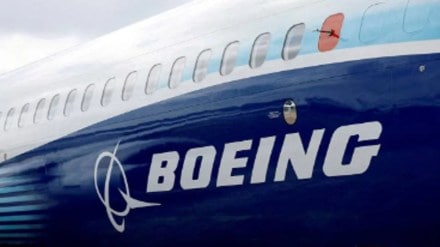Boeing, once a sign of American engineering expertise, is facing an unprecedented storm as strikes and financial missteps expose deep fissures within the aerospace giant. On last Friday, the company announced a 10% workforce reduction — amounting to a staggering 17,000 jobs — following escalating tensions with union workers and an array of operational setbacks. These layoffs, coupled with delays in its flagship 777X model, underscore the depths of Boeing’s crisis, threatening the company’s long standing reputation and market standing.
The International Association of Machinists (IAM) strike, now entering its second month, has paralyzed Boeing’s production lines, most notably in Everett, Washington, where not a single plane has been worked on since mid-September. This shutdown has contributed to a projected $5 billion loss, according to a report by Anderson Economic Group. The figure is staggering — with $3.7 billion borne by Boeing’s shareholders and employees, and the rest trickling down to suppliers, local businesses, and airlines reliant on Boeing’s output.
Kelly Ortberg, who assumed the role of CEO in August, communicated the grim reality to employees in an email on Friday, citing “the state of our business and our future recovery require tough actions.” But Ortberg’s efforts to stabilize Boeing’s financial course come amid a landscape already marred by scandal. Earlier this year, the company pleaded guilty to defrauding the Federal Aviation Administration (FAA) over its concealment of a faulty system in the 737 MAX, a flaw implicated in two deadly crashes that tarnished Boeing’s reputation and led to nearly $1 billion in fines. Despite a plea deal with the Department of Justice, the scars of the 737 MAX disaster still loom large, and a judge is currently reviewing the terms of that agreement.
Adding to Boeing’s woes, the 777X — its highly anticipated next-generation aircraft — has been delayed yet again, with first deliveries now pushed to 2026 due to issues in development and testing, worsened by the ongoing strike. This postponement risks alienating Boeing’s already restless clientele, many of whom are dealing with substantial financial losses due to Boeing’s setbacks. Patrick Anderson, CEO of Anderson Economic Group, noted, “Suppliers, Seattle-area businesses, and Boeing customers are paying part of the price,” as suppliers alone have lost close to $900 million due to the halt in production.
Financial analysts have taken note. Credit rating agency S&P placed Boeing on CreditWatch, signalling a potential downgrade if the company fails to resolve the strike and resume production. In an industry driven by fierce competition and narrow margins, a downgrade could severely limit Boeing’s borrowing capacity, potentially forcing it to raise capital through equity dilution — a move that would undoubtedly erode shareholder value.
Negotiations between Boeing and IAM leadership have grown increasingly acrimonious. John Holden, IAM president of District 751, insists that union members are “in this for the long haul,” underscoring their resolve to secure a “reasonable” pay package and job protections. The union’s demands have clashed sharply with Boeing’s proposals, which Stephanie Pope, CEO of Boeing’s commercial airplane division, deemed “non-negotiable” in a memo to employees. Yet Holden remains confident that the union’s strike fund can sustain its members indefinitely, a point that heightens the risk of prolonged disruption to Boeing’s operations.
As Boeing’s predicament worsens, Ortberg’s leadership faces a formidable challenge in navigating the company’s recovery. With regulatory scrutiny intensifying, customer dissatisfaction mounting, and operational costs soaring, Boeing’s efforts to restore trust and stability will require more than layoffs and cost-cutting measures. The future of one of America’s largest manufacturers hinges not only on its ability to make peace with its workforce but on a strategic overhaul capable of addressing the quality and safety concerns that have plagued its recent history. The question remains: can Boeing reclaim its status as an emblem of American manufacturing excellence, or is this storied giant headed for a forced landing.
